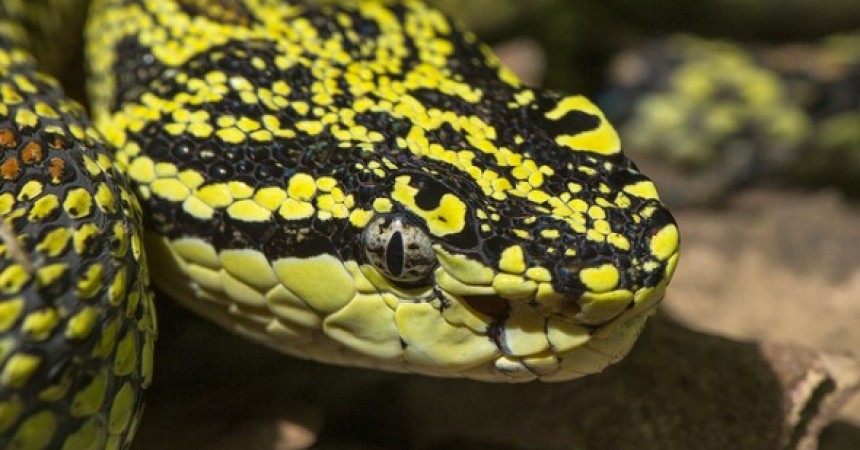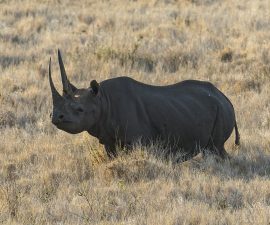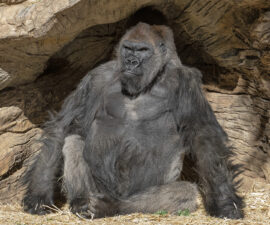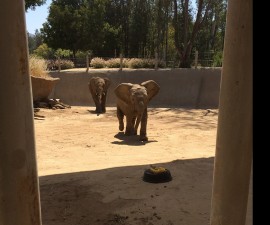You don’t have to be an animal expert to appreciate the natural world. In fact, simple short cuts like the fun facts listed below, can be very conducive to gaining a better understanding of the Animal Kingdom. Enjoy!
1. Monkeys have tails and apes don’t.
Since we have more in common with our great ape cousins than we do with monkeys, a good way to remember this fact is to simply look at your rear end.
2. There’s no such thing as a poisonous snake.
Contrary to pop culture and older versions of Encyclopedia Britannica, snakes are venomous, not poisonous. If they were poisonous, touching or licking a serpent would be the more appropriate fear than death by snakebite. And that’s even debatable, since statistics show that out of 7,000 to 8,000 snakebites per year in the U.S., only 5 or 6 are fatal. Call it semantics, but the truth is only 10 percent of the 3,000 species of snake are venomous, meaning they inject toxins into their prey (biting or stinging). The difference is skin deep.
3. Male birds are more colorful than females.
Generally speaking, males tend to be the beauty pageant winners of the winged world. Let’s turn to our friend Charles Darwin for an explanation. Next to his theory of natural selection, Darwin concluded that when it comes to reproduction, sexual selection gives some organisms an advantage over others. For birds, it’s all about the presentation, which explains why many males are covered in striking and ornate plumage, while females are not. Female birds, on the other hand, get to pick the most attractive male to mate with, so males have incentive to primp their plumage!
4. Bright colors convey toxins.
Unlike the striking plumage found in some male birds, the sparkling colors on certain amphibians, reptiles, and even insects are not an invitation but a warning, a built-in “Do Not Touch” sign. Poison frogs, for example, don’t inject their toxins into prey (like venomous snakes do), but if a predator tries to snack on one of these jewels of the rain forest, they will be in for a sore surprise. The same is true for vibrant monarch butterflies, which eat poisonous toxins for every meal in the form of milkweed. Now, we can’t forget to mention the poisonous mimickers that appear bright and dangerous but aren’t. Instead of remembering a long list of posers, a good rule of thumb is: Bright colors? Beware!
5. If you can count the humps on a camel, you can spell out the species.
What’s a camel to do with their humps? First things first, camels don’t store water in their humps. If that were the case, Bactrian camels would have the advantage of an additional hump to hydrate themselves or their human travelers. Now jot this one down: B is for Bactrian, and D is for dromedary. If the letter “D” were laying on it’s flat side, it would resemble the single hump found on dromedary camels. Following that logic, I’m sure you can figure out “B.”
6. Brown bears can be black and vice versa.
Don’t be fooled by the color of the coat! Despite their names, black and brown bears come in many different shades, often depending on the range and region of the subspecies. The best way to tell them apart would be to have one chase after you in the wild. If it follows you up a tree, you’ve got a black bear on your tail. If it just knocks the tree over, it’s a brown bear. (We seriously don’t recommend trying this.)
7. Elephant ears signify species. Listen up!
Two elephant species have been recognized in the Animal Kingdom: Asian and African. Besides originating from different parts of the world, one way to distinguish between the two is to take a closer look at the size of their ears. African elephants have larger ears that are shaped like their native continent. Meanwhile, Asian elephants’ ears are smaller because they don’t have to battle the heat like their African counterparts (elephants can flap their ears to cool off). Can you spot the Asian and African elephants in this picture?
Do you know any quick animal facts to add to this list? Share yours in the comments.
Jenn Beening is the social media specialist for San Diego Zoo Global. Read her previous post, 9 Animals You Never Knew Existed.





